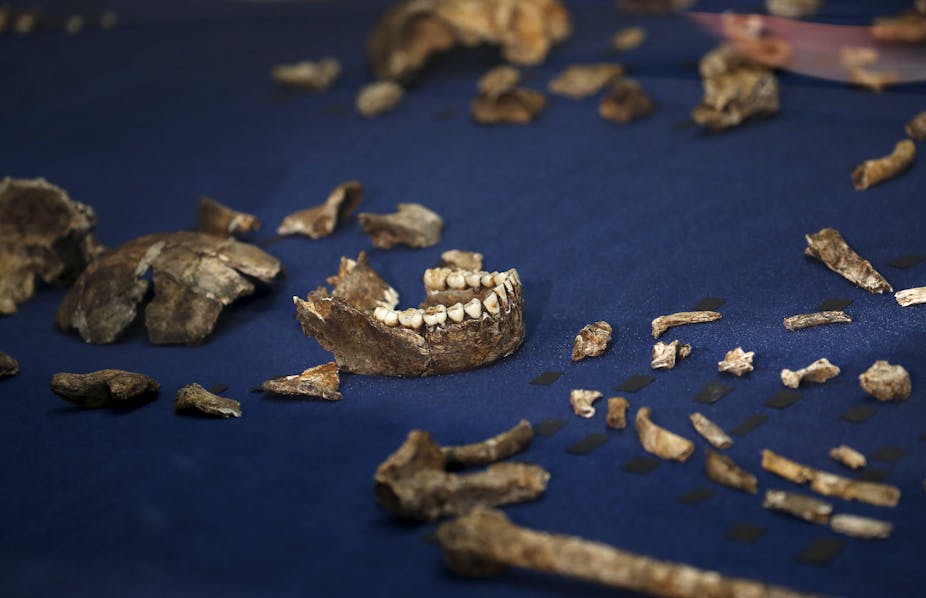Ancient DNA is starting to reveal the secrets of how people emerged from, moved into or moved around Africa. Human skeletons from Saldanha Bay in South Africa’s Western Cape province, Ballito Bay in its KwaZulu-Natal province and Mota Cave in Ethiopia; Tanzania and now Malawi have been analysed and the results recently published.
I am part of a team working on a whole series of skeletons from the Later Stone site of Faraoskop in the Western Cape. We are trying to find both mitochondrial and nuclear DNA samples to work out relationships between individuals in what may have been a case of mass killing some 2000 years ago.
This rush of projects has presented the curators of archaeological skeletons with ethical issues because the research requires the destruction of human bone.
There are four central problems that concern me and that have been echoed in my private correspondence with various colleagues: competition between labs for samples; the danger of parachute research (foreign researchers who drop in, gather data and go home again); the disconnection between the study of bones and genetics; and laboratory methodologies and comparative data.
The challenges
Competition for samples: This has become a very real problem. At least five labs have been processing archaeological skeletons from South Africa. Back in May 2014, I made a list of all ancient DNA projects on South African specimens that had, up to that point, been proposed or were in action. I counted 13, though not all of these have taken place.
In some cases permission to sample has been refused. One reason for refusal is that the project is simply an attempt to analyse skeletons because they are old and available. This sort of analysis may be good for the laboratory concerned, but it is just plain bad science and is perilously close to “mining” of bone specimens from museums.
Much of the competition for samples is publication driven with labs chasing the next paper in Nature or other high-impact journals. This is obviously important as it can drive funding for labs or promotions for their denizens.
Parachute research: It’s very easy to do sampling in this kind of research. All that’s required is a nubbin of bone, and in most cases that is sent out of the country for analysis to happen elsewhere. So how should South African researchers fit in?
For a number of years there was an active resistance to setting up a South African lab in the belief that it was too expensive and funding would be better spent on projects that have a more direct benefit to the country’s previously disadvantaged people. That attitude is now changing in some quarters and I have heard talk of setting up labs in Cape Town, Johannesburg and Pretoria. How would such labs link to overseas institutions?
Genes versus bones: There has been a definite tendency for genetic research to ignore information gathered in previous studies of the bones of the skeletons themselves.
Ancient DNA research, like genetic research on living peoples, has been focused on tracing back lineage lines through mitochondrial, Y-chromosome or, very recently, nuclear DNA. All that has been required is a tiny fragment of bone that can yield DNA. But can such studies give us a true picture of the past?
The answer is “yes” in terms of lineage, but “no” in terms of life experience and adaptation. This issue is important because the first choice in sampling should be from as complete a skeleton as possible so that genetic and osteological data – that is, information about bones – can be compared.
Perhaps the most extreme example of this problem is the construction of the human ancestor known as the “Denisovans”. Much has been written about these distant ancestors’ genetics. But all of it has been based on one finger bone and three teeth from one site. We actually know nothing about these people except for their genetic shadow. The forensic anthropologist in me screams that I must have a body before making any conclusions. The same goes for the discussion of people from the comparatively recent African past.
Comparative data: As a non-geneticist, it did not cross my mind that different labs might produce different DNA results. Some years ago I had my own Y-chromosome and mitochondrial DNA analysed. The results were fascinating, but I was extremely surprised to discover that if I sent the same samples to different DNA heritage laboratories I could get different results.
It is not the analysis itself that is different, but the reference samples that are chosen for comparison. This can be resolved as the analysed samples become more numerous – as long as the different labs share their results – but I have recently discovered that not all labs are the same when it comes to piecing together long strands of nuclear DNA from the fragments discovered in the process of extracting ancient DNA from bones.
The processing methods are not interchangeable and there are at least two different methodologies that produce different success rates. This means it is possible that results from different labs may not be comparable. This would make the competition between labs even more intense and might even result in multiple requests for samples from the same skeleton.
Knowledge about African heritage
Ultimately, the most important issue is that African scientists need to be part of the research and African descendant communities need to be able to access the information discovered about their ancestors.
We need to ensure that both training and jobs in ancient DNA research are available in African countries and that publications are submitted to local scientific and museum journals. This research is not about the next promotion for the lab scientists. It is about building the knowledge base of our African heritage.
This article has been adapted from a piece which originally appeared in the South African Journal of Science.

